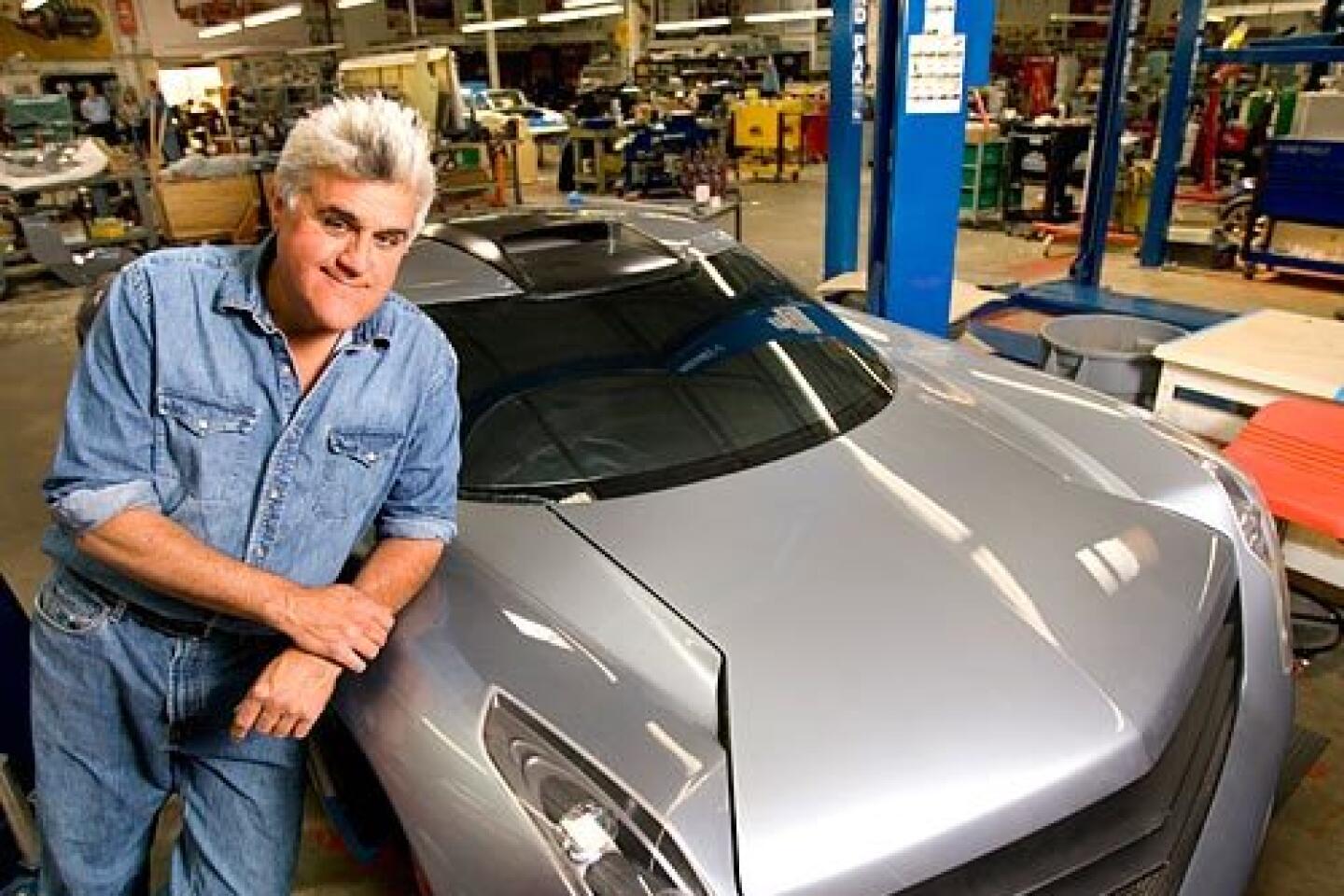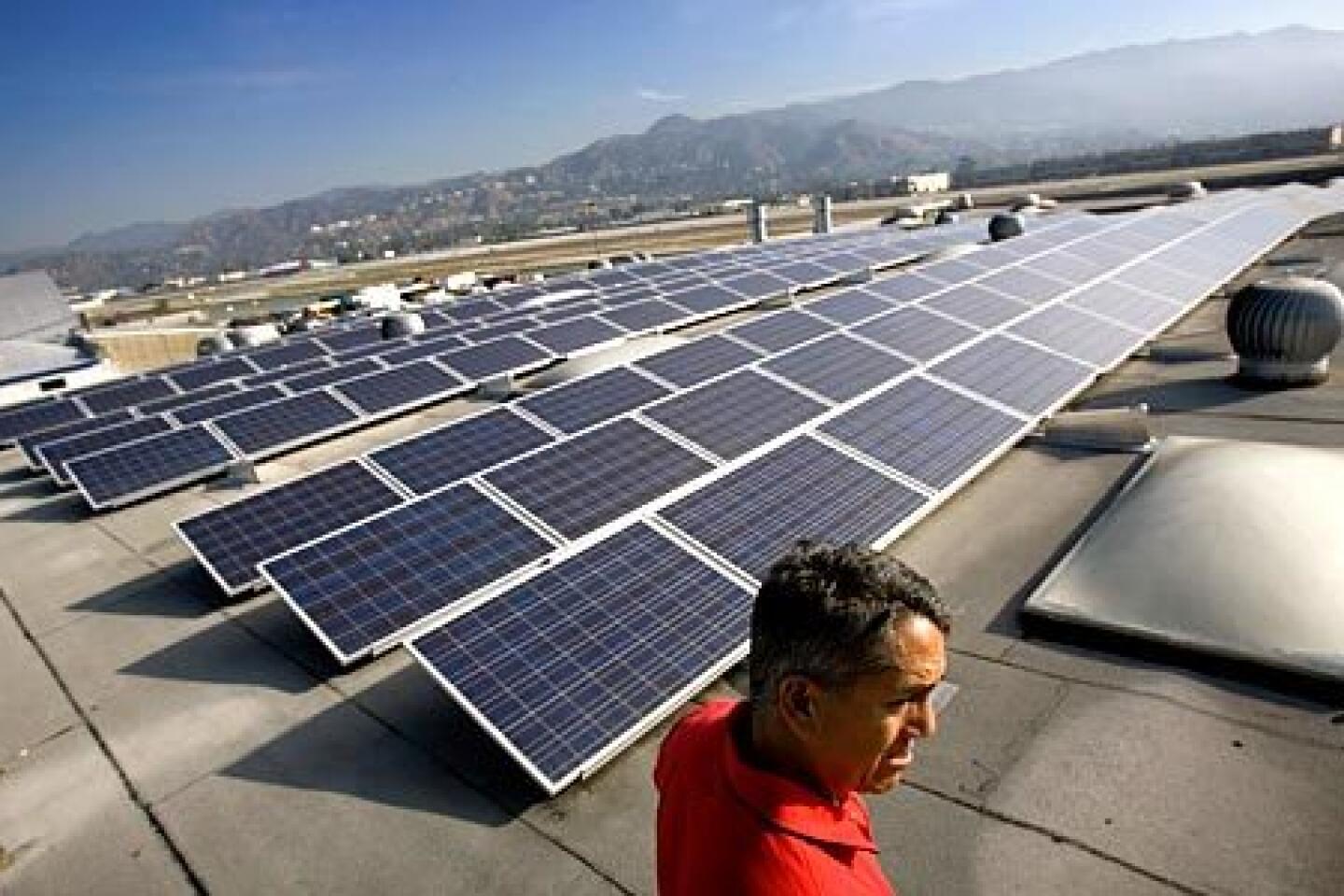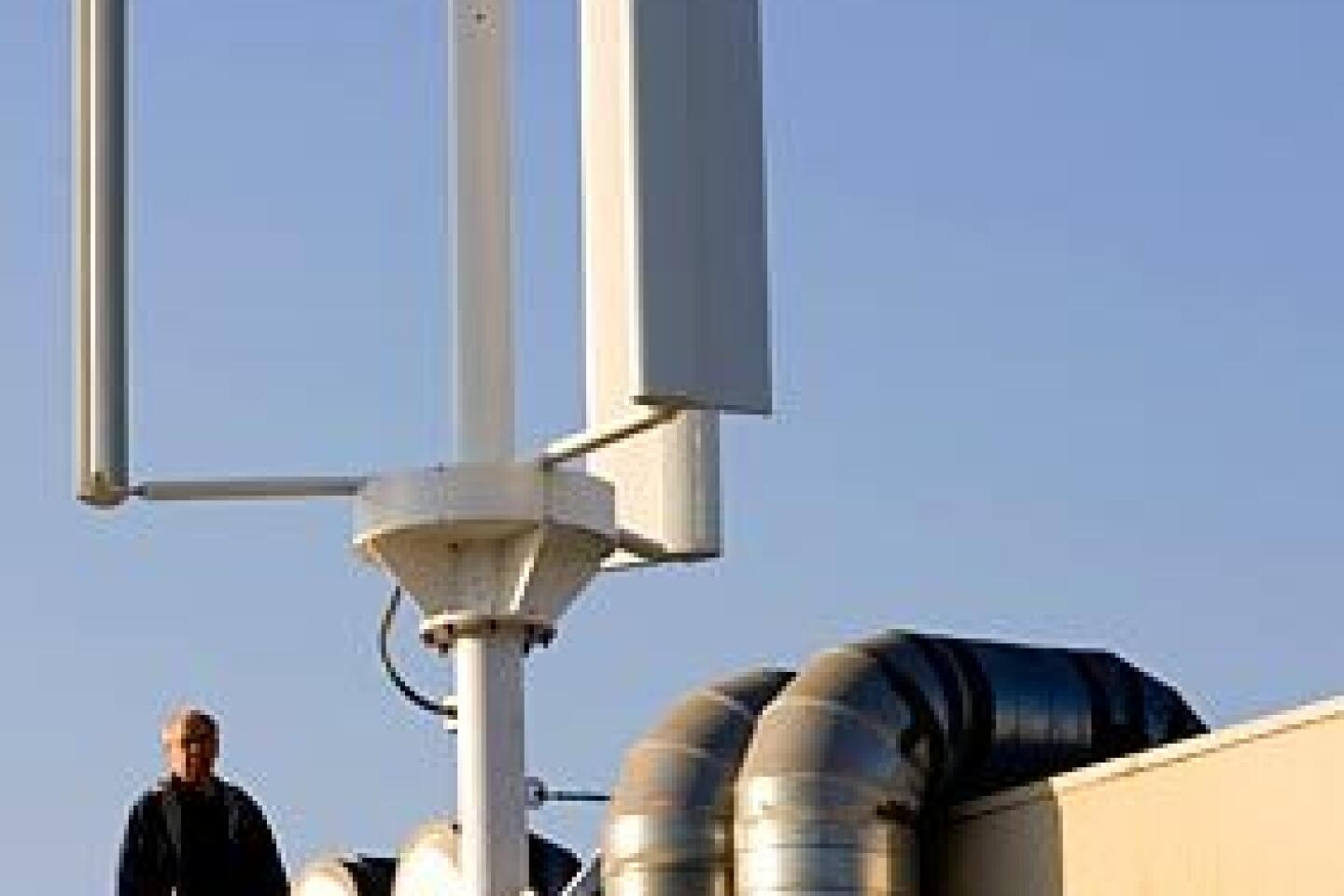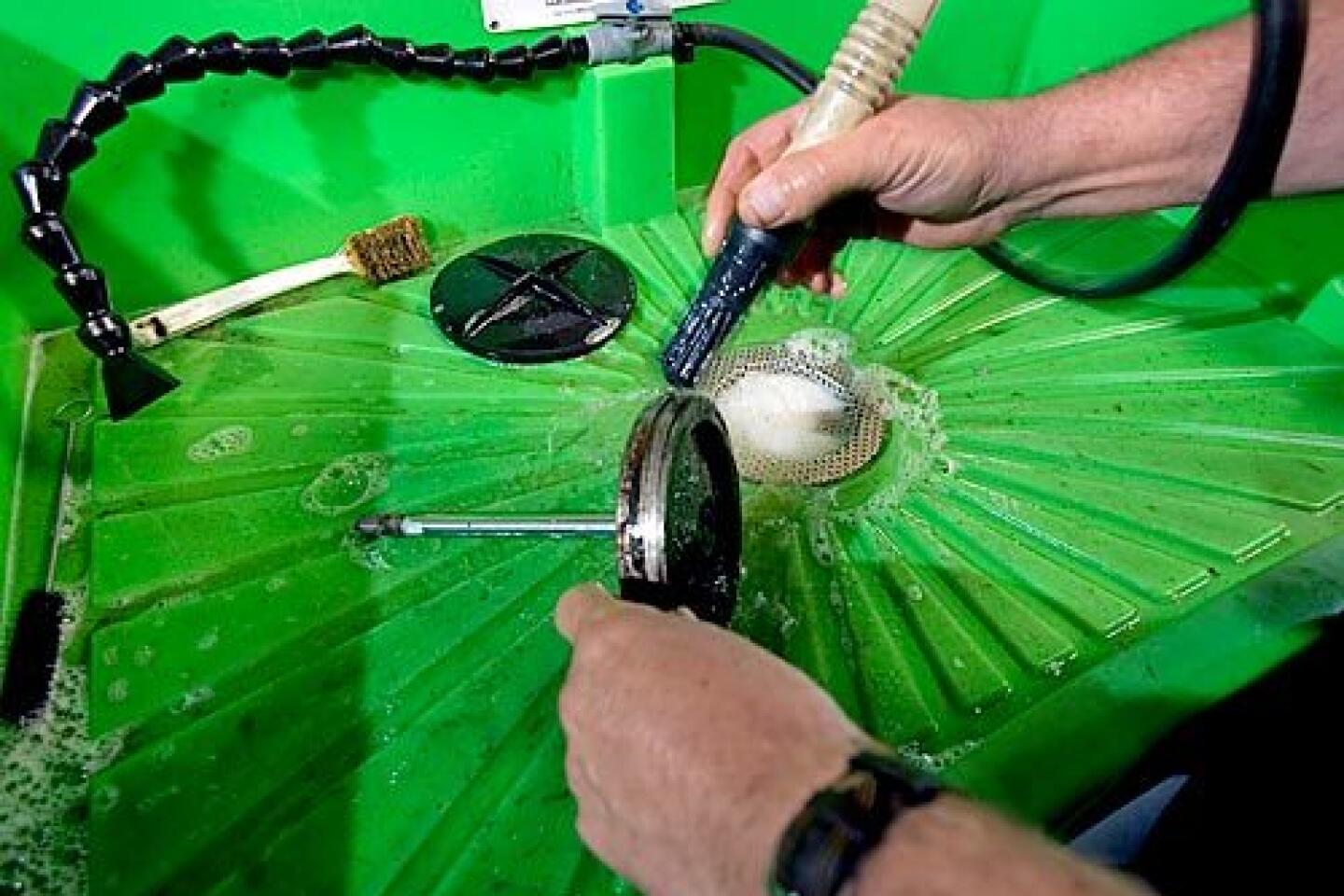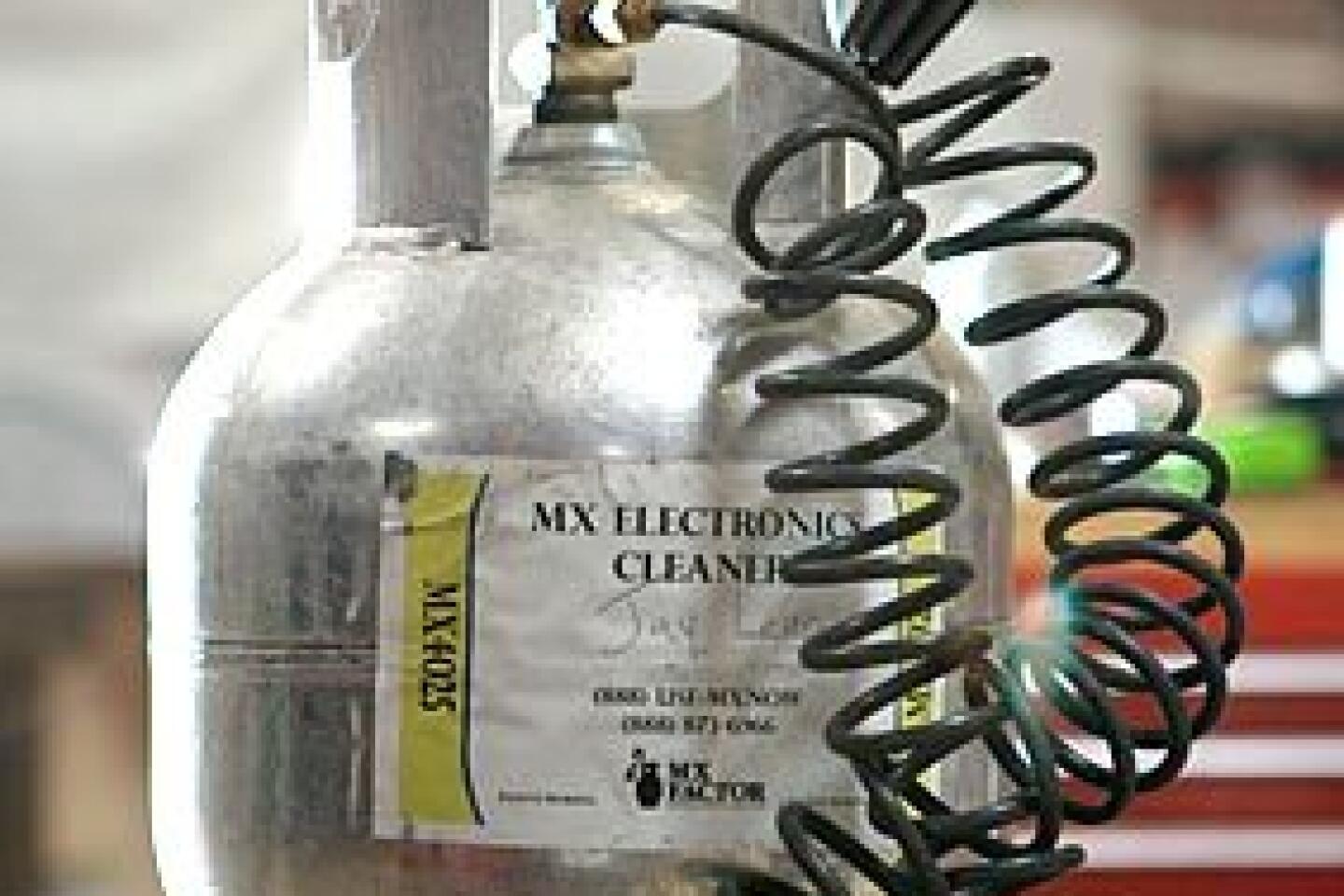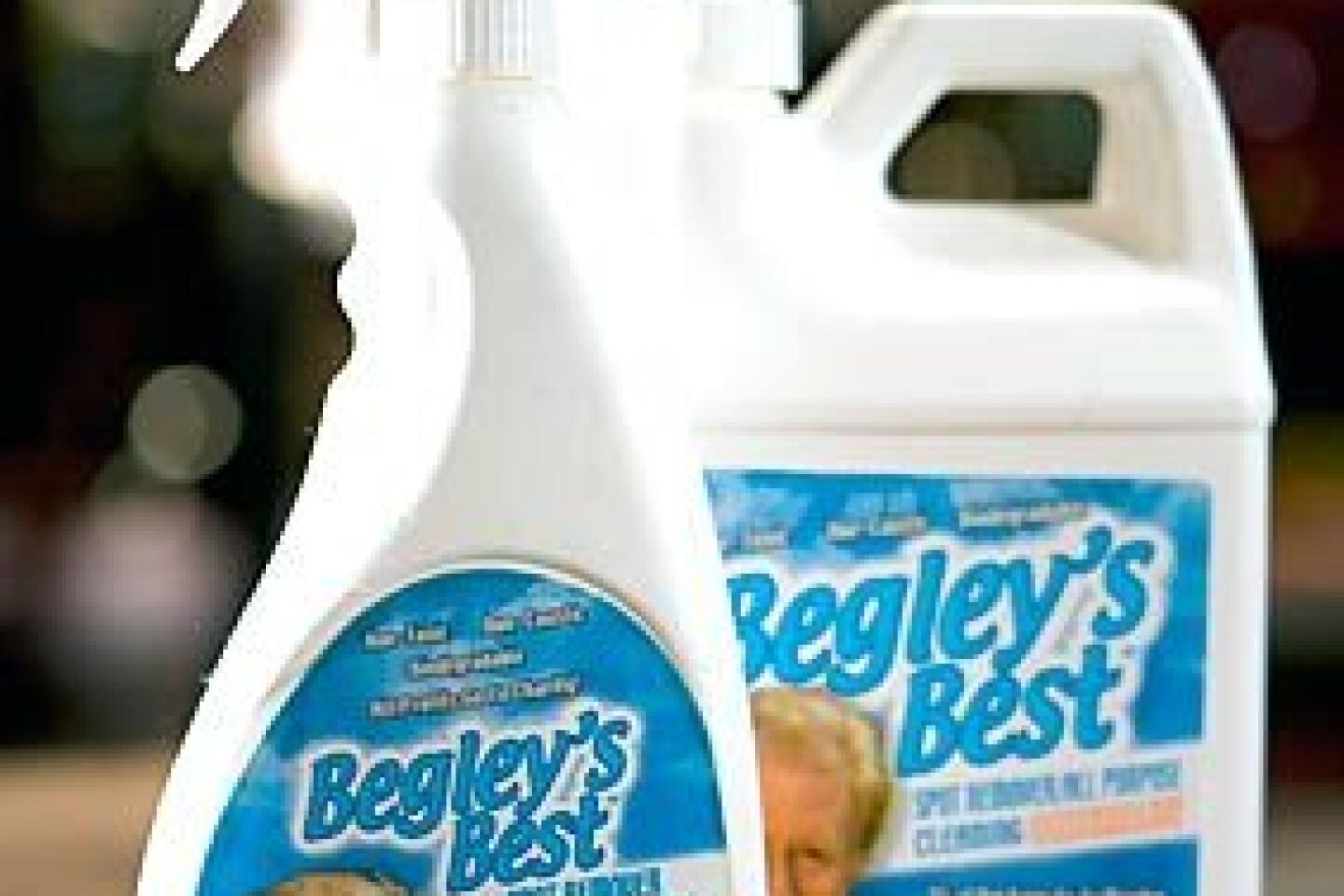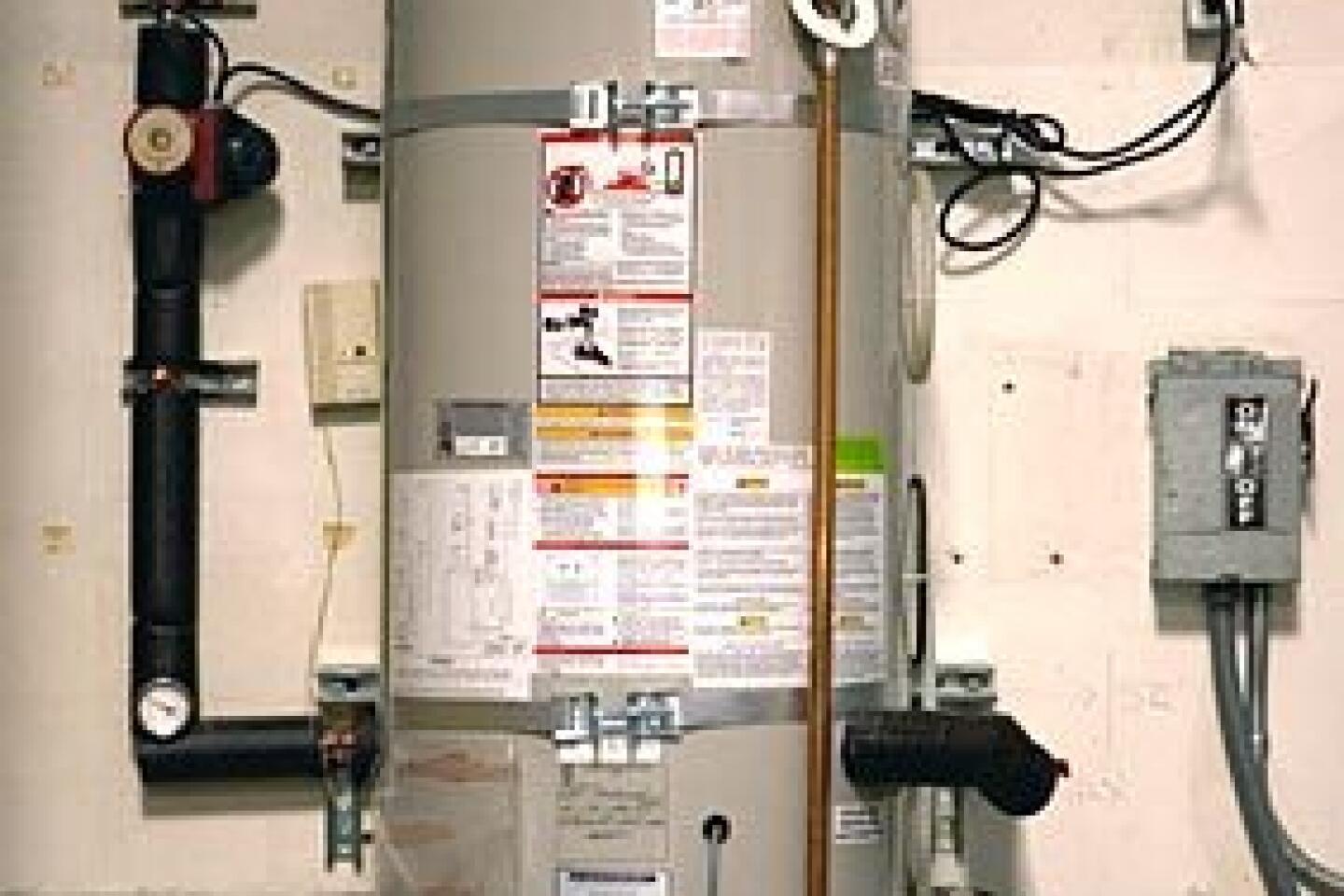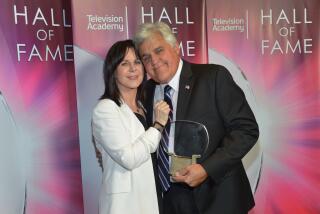Jay Leno’s Green Room
JAY LENO likes anything that rolls and explodes and makes noise, and his Big Dog Garage offers proof. Its 17,000 square feet are packed with rolling, exploding and noisy things -- most of them four-wheeled, rare and expensive.
But lately, the 57-year-old host of “The Tonight Show With Jay Leno” is showing an interest in things that act quietly. Things such as solar panels and wind turbines and grease-eating microbes. He’s systematically taking stock of his garage and greening it, with self-generated power, energy-efficient heating and nontoxic cleaners.
“My thing with the green situation is: Even if you don’t believe in global warming, don’t you want to screw the oil company or gas company or utility company?”
Leno said he believes in global warming. And judging from the 54-kilowatt solar-power system he installed atop his garage last month, he also believes in putting it to the utility company, but that isn’t quite what’s happening. On a recent weekday morning, his solar panels were generating 33 kilowatts -- enough electricity to run the air conditioning, overhead lights and power tools and to return some power to the city, in effect assisting Burbank Water and Power.
When he isn’t hosting “The Tonight Show” or performing stand-up (160 dates a year), Leno spends his spare time here, at his garage adjacent to Bob Hope Airport in Burbank.
When I met him for our interview, he looked more like a mechanic than the wealthy host of the country’s No. 1 late-night talk show. His button-down shirt was wrinkled. His gray hair was smushed into a lopsided, bed-head ‘do. He had the appearance of a man who’d just awoken and rolled in to work. Only this isn’t work for Leno. It’s play.
“I like projects,” said Leno, who was futzing with the plumbing on a newly acquired 1907 White Steamer. The steam car is one of about 150 vehicles in his collection, which run the gamut from 100-year-old motorcycles and European coupes to 1960s muscle cars and high-performance exotics, such as a McLaren F1.
“There are people who say, ‘Well, you should sell all your cars and ride your bicycle,’ ” Leno said, adopting a whiny voice to mimic his critics. “No. I’m not going to do that, but what else can I do?”
Leno drives a different vehicle each day, but he tries to minimize the environmental impact. He lives only eight miles from work. He recycles. And, in addition to the solar panels and a wind turbine on his roof, he’s implemented a number of other systems inside his garage that are designed to reduce toxic waste.
His parts cleaners are eco-friendly -- one uses microbes to eat away grease and grime, the other employs ultrasonic cleaning bubbles. Instead of a gas-operated plasma cutter to saw parts out of sheet metal, a water jet does the job using sand. And refillable canisters of brake and carburetor cleaners take the place of throwaway aerosol cans.
“It isn’t just one thing,” said James Meigs, editor in chief of Popular Mechanics magazine. “I think that’s a really important issue a lot of people have to accept in terms of reducing environmental impact. A lot of times, it’s a lot of little things that add up. Very rarely is there just one magic bullet that’s going to substitute for the old ways of doing things.”
In a bimonthly column he writes for Popular Mechanics, Leno has written about many of his garage’s green systems. Like Leno’s sprawling vehicle collection, the topics have roamed far and wide -- from the nuts and bolts of specific car restorations to musings on obscure technologies -- but it’s only been in the last year that his columns have begun taking on a green hue.
Credit where it’s due
LENO attributes at least part of his awakening to fellow comedian and TV star Ed Begley Jr., who’s been at the vanguard of the celebrity eco movement for so many years that he long ago became the butt of jokes. Now, Begley is the one who’s laughing, with a successful show on the Home & Garden Television cable channel and line of biodegradable cleaning products, some of which were on hand at Leno’s garage.
“I give people like Ed a tremendous amount of credit. When he started it was like, ‘That’s interesting.’ But then, as more and more proof comes along, you go, ‘Hey, this guy was right,’ ” said Leno, who began investigating alternative power sources for his garage in mid-2006.
Eighteen months later, he’s a frequent visitor to the Fat Spaniel computer system that monitors his homemade power. At various points during our interview, he wandered into his office -- yes, his garage has an office, as well as a gourmet kitchen -- to see how many kilowatts were being generated.
“We’re up to 33,” Leno said, running his finger along the monitor. “The energy to power 40 homes. And it’s not even peak.”
Walking over to the power meter to confirm what he’d just read on the computer, he tapped the screen.
“Right now, I’m using all the power I want, and I’m generating more power than I’m using. Why would anybody get mad at you for that? To me, you want to be a good citizen. It’s important to try and be a good citizen. And you can.”
It’s just expensive.
“If you want to party, you’ve got to pay for it,” said Leno, who has so far spent $450,000 to party -- and that’s just for the solar power. It will be at least eight years before the panels have paid for themselves, he estimates, and even then they won’t cover his entire electric bill. Currently, the panels cover 41% of the power consumed at his garage; 59% continues to come from Burbank Water and Power.
“Two-thirds of the day, there’s not enough sunlight to generate electricity,” said John Joyce, solar support program manager for the utility.
That’s why Leno has partied away an additional $19,000 and installed a 10-kilowatt wind turbine, which spins into action at night, when the sun goes down and the breezes pick up.
“I’m just trying a lot of different systems to see which will gain me the most amount of power,” said Leno, who anticipates adding additional turbines and solar panels in the coming years.
He acknowledges his green conversion has been expensive.
“I guess I’m a rich guy,” said Leno, who makes an estimated $25 million annually as host of “The Tonight Show.” “I can afford to do it, so why don’t I be the one that experiments with it and tries it out? And if it works, if enough people like me try it, then it passes down and becomes more affordable.”
So far, Leno has installed solar panels and a wind turbine only at his garage because he uses a lot more electricity there than at his house. But his Beverly Hills home is the “next step,” said the comedian, who’s been frustrated by frequent power outages.
“Our power was out for 18 hours about a month ago, for no reason,” he said. “It was a beautiful day. Bink. What happened? It’s like you’re in a Third World country now in California.”
That’s part of why Leno believes “if you want to keep living the way you’re living, then, hey, you better make your own electricity.”
It’s a personal thing
LENO is a populist who has often said that he puts his jokes before his politics in order to reach the broadest possible audience. While many politicians have chosen to announce their candidacies on his show, Leno has always steered clear of endorsing specific people. His embrace of green is similarly apolitical. It’s a personal choice that’s grown out of his own experiences and interests.
“What happens in America is everything becomes a religion,” Leno said. “There are two ways. You can either preach being green or you can preach self-sufficiency. It’s the same thing. I think what happens is you need some sort of revolution every now and then to wake people up. . . . With the situation in the Middle East and everything else, any other alternative fuel source you can come up with is good. Pick the reason you want. I want to be self-sufficient. OK. I want to be green and save the Earth. OK. The outcome is the same, so it doesn’t make any difference.”
Leno likes the challenge of being green. He enjoys the technology, and he looks back in history to see how it has evolved over time.
“We’re in the exact same position in 2007 that we were in in 1907. In 1907, it was mostly gas cars. There were an awful lot of steam cars. There were an awful lot of electric cars, and they all fought it out like Beta and VHS and ultimately, the gas car won,” said Leno, who counts several Stanley Steamers and a 1909 Baker electric in his collection. “Today, we have electricity, we have hydrogen and we have fuel cells. One of those will win out.”
More to Read
Sign up for Essential California
The most important California stories and recommendations in your inbox every morning.
You may occasionally receive promotional content from the Los Angeles Times.
